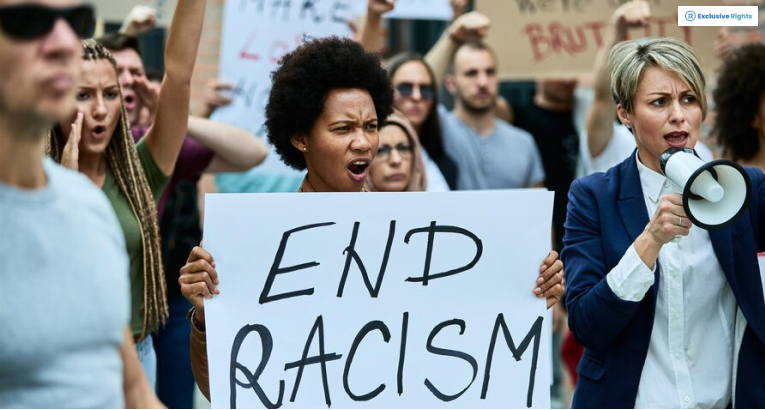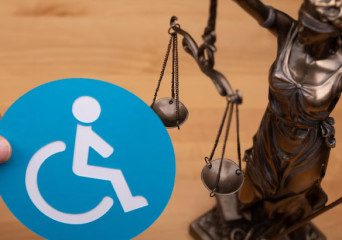
Table Of Contents
- What Is Racial Discrimination?
- Forms of Racial Discrimination
- Racial Stereotyping and Prejudice
- Microaggressions
- Institutional Racism
- Effects of Racial Discrimination
- Psychological Impact
- Socioeconomic Disparities
- Social Division and Tension
- Combating Racial Discrimination
- Education and Awareness
- Legislation and Policies
- Promoting Inclusivity
- Fostering Dialogue
- What Movement Tried To End Racial Discrimination?
- Brown v. Board of Education (1954)
- Montgomery Bus Boycott (1955-1956)
- Civil Rights Act of 1964
- Voting Rights Act of 1965
- March on Washington for Jobs and Freedom (1963)
- Malcolm X and the Nation of Islam
- Black Power Movement
- How To File A Racial Discrimination Complaint?
- 1. Determine the Appropriate Agency or Entity:
- 2. Gather Information:
- 3. Contact the Relevant Agency:
- 4. Initiate the Complaint:
- 5. Wait for Review:
- 6. Investigation:
- 7. Resolution:
- 8. Legal Action:
- Final Thoughts
What Is Racial Discrimination?: A 2023 Guide To Racial Discrimination
Discrimination against human beings is absolutely frowned upon by the law. This is because, under the law, every human being is created equally, and no one is treated indifferently due to their indifferences.
You might wonder, if there are various instances when individuals are discriminated against based on their color, race, or ethnic background, how are they able to fight against such injustice? In this article, we will discuss what racial discrimination is and ways one can fight against it.
What Is Racial Discrimination?
Racial discrimination is a deeply ingrained social issue that involves treating individuals unfairly based on their racial or ethnic background. It can manifest in various forms, from subtle biases to overt acts of prejudice. This article delves into the concept of racial discrimination, its effects on individuals and society, and strategies to combat this harmful practice.
Forms of Racial Discrimination
Racial Stereotyping and Prejudice
Stereotyping involves making assumptions about individuals based on their race or ethnicity. This can lead to prejudiced attitudes, where people develop negative beliefs or opinions about others solely due to their racial background.
Microaggressions
Microaggressions are subtle, often unintentional comments or actions that convey derogatory messages about someone’s race. These can be casual remarks or behaviors that perpetuate harmful stereotypes and create a hostile environment.
Institutional Racism
Institutional racism refers to systemic biases embedded within institutions, policies, and practices that disadvantage certain racial groups. This can manifest in areas such as education, employment, housing, and criminal justice.
Effects of Racial Discrimination
Psychological Impact
Racial discrimination can cause significant psychological distress to its victims. Constant exposure to discriminatory behavior can lead to anxiety, depression, and low self-esteem. It creates a sense of not belonging and erodes an individual’s self-worth.
Socioeconomic Disparities
Discrimination can limit access to education, employment, and housing opportunities for marginalized groups. This perpetuates socioeconomic disparities, making it difficult for affected individuals to break the cycle of poverty.
Social Division and Tension
Racial discrimination contributes to social fragmentation by fostering resentment and mistrust between different racial groups. This division hinders societal cohesion and cooperation.
Combating Racial Discrimination
Education and Awareness
Raising awareness about the harmful effects of racial discrimination is crucial. Educational campaigns can help individuals recognize their biases, challenge stereotypes, and promote empathy and understanding.
Legislation and Policies
Strong anti-discrimination laws and policies can hold individuals, organizations, and institutions accountable for their discriminatory actions. These measures provide legal recourse for victims and discourage prejudiced behavior.
Promoting Inclusivity
Creating inclusive spaces where diverse perspectives are valued can help counteract discriminatory practices. In workplaces, schools, and communities, efforts should be made to celebrate diversity and create environments where everyone feels respected.
Fostering Dialogue
Open and honest conversations about race can break down barriers and dispel misconceptions. Constructive dialogues allow people to share their experiences, challenge biases, and learn from one another.
What Movement Tried To End Racial Discrimination?
One of the most prominent movements that sought to end racial discrimination in the USA was the Civil Rights Movement. The Civil Rights Movement was a social and political movement that spanned several decades, primarily from the mid-20th century, with the goal of ending racial segregation, discrimination, and inequality against African Americans and other marginalized racial groups.
Key events and figures associated with the Civil Rights Movement include:
Brown v. Board of Education (1954)
This landmark Supreme Court case ruled that segregation in public schools was unconstitutional, overturning the “separate but equal” doctrine established by the earlier Plessy v. Ferguson case.
Montgomery Bus Boycott (1955-1956)
This year-long protest against racial segregation on public buses in Montgomery, Alabama, was sparked by Rosa Parks’ refusal to give up her seat to a white passenger. The boycott marked a significant nonviolent protest strategy and helped elevate Dr. Martin Luther King Jr. to national prominence.
Civil Rights Act of 1964
This landmark legislation outlawed discrimination based on race, color, religion, sex, or national origin. It ended segregation in public places and banned employment discrimination on the basis of these factors.
Voting Rights Act of 1965
This act aimed to overcome racial barriers to voting by prohibiting literacy tests and other discriminatory practices that prevented African Americans from voting. It led to a significant increase in African American voter registration.
March on Washington for Jobs and Freedom (1963)
This iconic event featured Dr. Martin Luther King Jr.’s famous “I Have a Dream” speech and called for an end to racial segregation and equal rights for all Americans.
Malcolm X and the Nation of Islam
While not part of the mainstream Civil Rights Movement, Malcolm X and the Nation of Islam advocated for black self-sufficiency, pride, and separation from white society. Later in his life, Malcolm X moderated his views and sought greater unity among all races.
Black Power Movement
Emerging in the late 1960s, this movement emphasized self-determination, cultural pride, and empowerment for black communities. It was associated with figures like Stokely Carmichael (later Kwame Ture) and the Black Panther Party.
These movements, along with the contributions of countless activists, leaders, and organizations, played a crucial role in challenging racial discrimination, dismantling segregation, and advancing civil rights for African Americans and other marginalized groups in the United States.
How To File A Racial Discrimination Complaint?
You might be a victim of racial discrimination, but you are wondering the way you can effectively acquire justice for the injustice you have been facing.
Filing a racial discrimination complaint in the USA involves a process that varies depending on the context and the entity you’re filing against. Here’s a general guide on how to file a racial discrimination complaint:
1. Determine the Appropriate Agency or Entity:
Identify the appropriate agency or organization to file your complaint based on the context of the discrimination. Different agencies handle different types of discrimination complaints, such as employment, housing, education, and public accommodations.
2. Gather Information:
Collect all relevant information and documentation related to the discrimination you experienced. This may include dates, times, locations, names of involved parties, witnesses, and any evidence like emails, documents, photos, or videos
3. Contact the Relevant Agency:
Reach out to the appropriate agency or organization that handles the type of discrimination you experienced. Some common agencies include:
For Employment Discrimination: U.S. Equal Employment Opportunity Commission (EEOC)
For Housing Discrimination: U.S. Department of Housing and Urban Development (HUD)
For Education Discrimination: U.S. Department of Education, Office for Civil Rights (OCR)
For Public Accommodations Discrimination: Depending on the state, it might be the state’s civil rights enforcement agency or the U.S. Department of Justice (DOJ).
4. Initiate the Complaint:
File the complaint following the agency’s specific procedures. This often involves submitting a formal complaint form, providing a detailed description of the discrimination, and attaching any supporting documentation.
5. Wait for Review:
After filing the complaint, the agency will review the information and evidence you provided. They may reach out to you for additional information or clarification.
6. Investigation:
If the agency determines that your complaint has merit, they will launch an investigation into the matter. This can involve contacting the parties involved, reviewing evidence, and collecting additional information.
7. Resolution:
Once the investigation is complete, the agency will determine if there’s enough evidence to support your claim of racial discrimination. If discrimination is found, they may attempt to mediate a resolution between you and the accused party.
8. Legal Action:
If a resolution is not reached or if the discrimination continues, you might have the option to pursue legal action, such as filing a lawsuit in a relevant court. Consult with an attorney experienced in discrimination cases to understand your legal options.
Remember that each agency or organization may have slightly different procedures, timelines, and requirements for filing a discrimination complaint. It’s essential to research and follow the specific guidelines provided by the agency that handles the type of discrimination you’re addressing.
Additionally, seeking legal advice or assistance from relevant advocacy organizations can help ensure you navigate the process effectively and protect your rights throughout the complaint procedure.
Final Thoughts
Now you have a fair idea about what amounts to racial discrimination and ways one can face it on a day-to-day basis. You are advised that you appoint a civil rights lawyer if you or your known ones are facing racial discrimination.
Hope you have found this article informative and helpful as per your needs.
Read Also:









